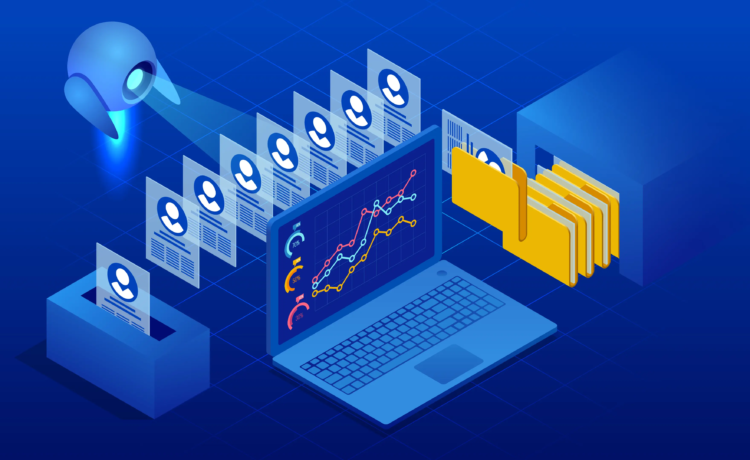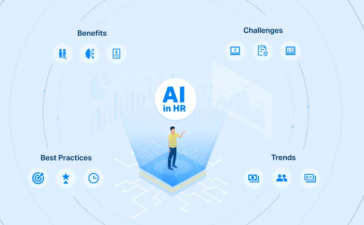Predictive analytics has become a prominent term in the tech industry, involving the use of data, statistical algorithms, and machine learning techniques to forecast future outcomes based on historical data. This approach helps in anticipating trends and making informed decisions. Similarly, predictive HR analytics has gained importance, enabling HR professionals to predict employee turnover, identify promising candidates, and enhance workforce planning, thus staying ahead in a competitive environment.
For instance, Hewlett-Packard (HP) developed a predictive model in 2011 to forecast employee turnover, giving each employee a “flight risk” score to assess their likelihood of leaving the company. This allowed HP to implement retention strategies for high-risk employees, demonstrating the practical application of predictive HR analytics.
Understanding Predictive Analytics in HR
Predictive HR analytics involves analyzing data using digital tools to interpret, classify, and identify patterns, anomalies, and relationships. It streamlines the hiring process by integrating past hiring data, current standards, and future benchmarks. This method helps continuously monitor and adjust hiring practices to align with company culture and productivity goals, and assess employee contributions towards organizational objectives.
Forecasting Workforce Trends Using Data
Predicting trends such as remote work, employee wellness, and upskilling helps organizations understand employee needs and reduce attrition. By analyzing historical and current HR data, organizations can forecast future workforce requirements, including necessary skills and potential labor shortages. For example, Xerox Corporation improved its call center hiring process by focusing on personality tests rather than work experience, resulting in a 20% reduction in attrition rates.
The Role of HR Dashboards in Predictive HR Analytics
HR dashboards are tools that allow HR teams to monitor and present Key Performance Indicators (KPIs) in a clear format. Advanced dashboards consolidate data from various sources, enabling detailed analysis and timely insights. They help track metrics like turnover rates, employee engagement, and training effectiveness, providing real-time data to address workforce changes proactively.
Tools and Technologies for HR Analytics
To perform effective data analysis, HR professionals need the right tools. HR Information Systems (e.g., BambooHR, Workday), predictive analytics software (e.g., IBM Watson Talent Insights), business intelligence tools (e.g., Tableau, Power BI), and social media analytics tools (e.g., Hootsuite Insights) all contribute to transforming raw data into actionable insights.
Transforming HR with Technology
HR technology enhances efficiency by automating tasks, enabling data-driven decision-making, and improving candidate and employee experiences. It supports strategic initiatives like workforce planning by managing repetitive administrative tasks, allowing HR teams to focus on more impactful activities.
Improving Data Analysis and Forecasting in HR
Predictive analytics addresses challenges such as data quality, integration, and privacy. By applying statistical models and algorithms, HR professionals can improve data accuracy, integrate data from different sources, and provide concrete evidence for change, while ensuring compliance with data protection regulations.
AI in HR: Transforming Predictive Analytics
AI enhances HR by automating routine tasks, improving data accuracy, and providing deep insights into employee behavior. AI-powered tools analyze large volumes of data to identify patterns and trends, enabling targeted strategies for employee engagement and retention. AI also offers real-time data on key HR metrics, helping organizations address potential issues promptly.
Challenges of Implementing AI in HR Analytics
Implementing AI presents challenges such as requiring specialized expertise and ensuring unbiased outcomes. Organizations must also comply with legal and ethical standards regarding data protection and non-discrimination. Strategic implementation, ongoing monitoring, and evaluation are essential to overcome these challenges and ensure effective use of AI in HR.
Talent Analytics: Identifying and Developing Top Talent
Talent analytics uses data to identify high-potential employees and develop them for future roles. By analyzing performance metrics and skills assessments, organizations can create targeted development programs and improve talent management. This approach helps in forecasting future workforce needs and addressing skill gaps through tailored training initiatives.
Impact of Data on Employee Engagement and Retention
Predictive analytics allows organizations to understand factors influencing employee engagement and retention, such as job satisfaction and work-life balance. By collecting and analyzing data, organizations can develop strategies to enhance engagement and retention, ultimately leading to better business outcomes.
Using Data to Gauge Workforce Sentiment
Collecting data through surveys and feedback mechanisms helps organizations understand employee satisfaction and engagement. Analyzing this data reveals patterns and areas needing improvement, enabling the development of strategies to boost engagement and address gaps.
Improving Employee Engagement through HR Analytics
Predictive analytics provides insights into historical trends and benchmarks, linking engagement data to business results. This helps organizations develop targeted strategies to improve engagement, such as recognition programs and enhanced communication channels, ultimately leading to higher retention and better performance.
Predictive HR analytics enables organizations to align their talent acquisition and retention strategies with business objectives, fostering a strong workforce. However, it is crucial to balance data-driven insights with human judgment to address the complexities of the workforce effectively.





